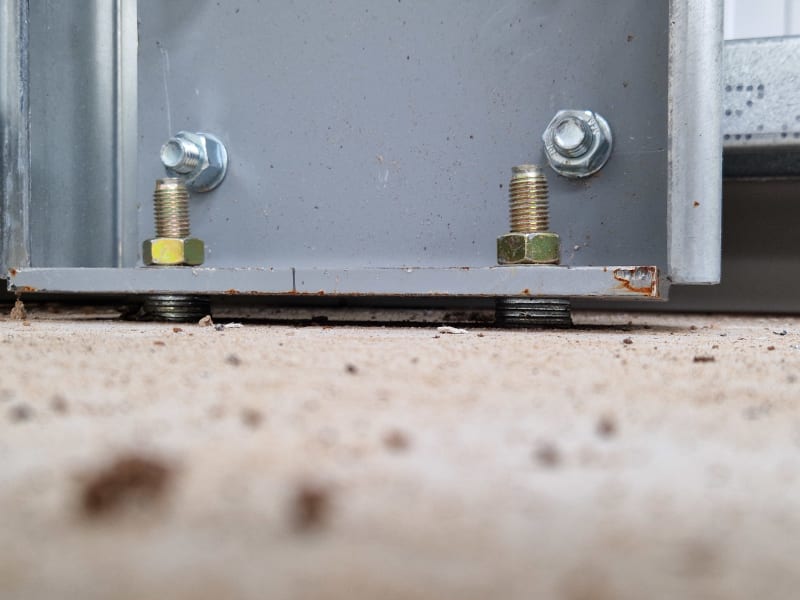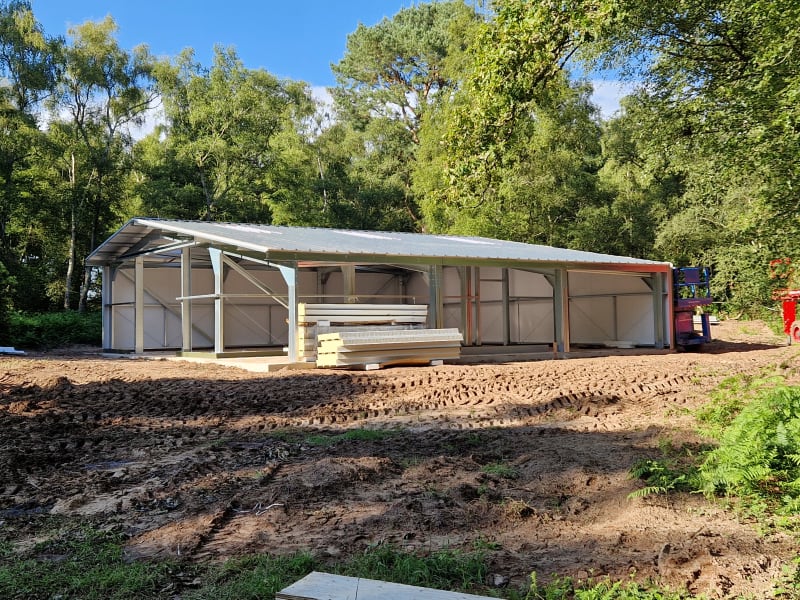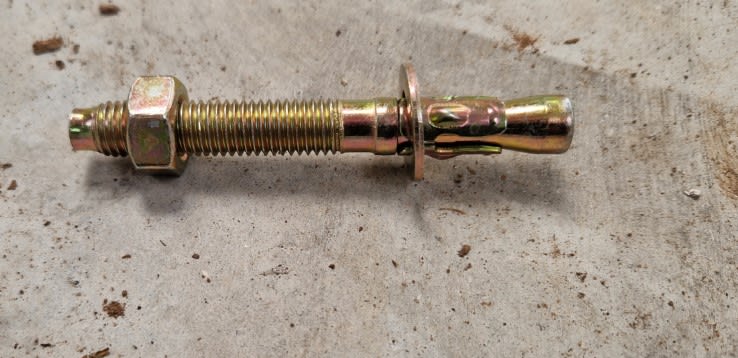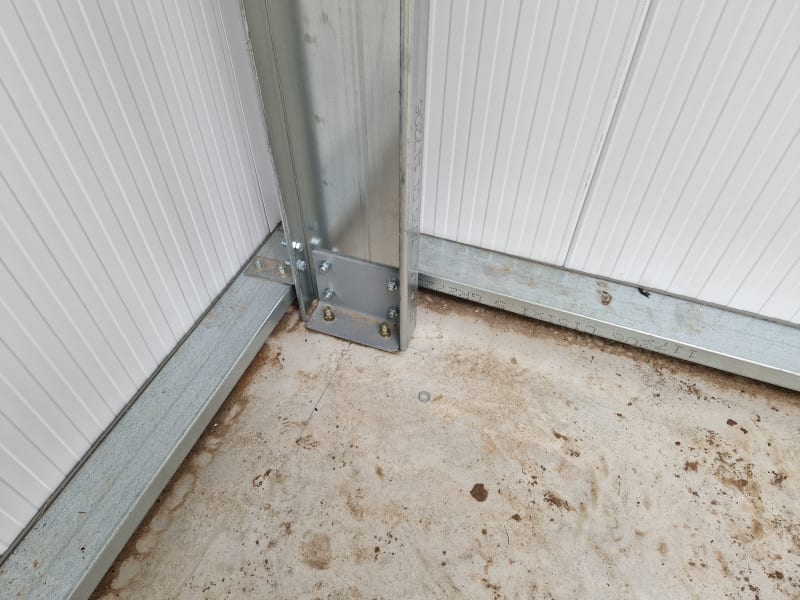threeReefs
Electrical
- Jul 21, 2024
- 2

I'm having a forestry building put up, and the contractors have done this to compensate for slight variations in slab height. The building is steel-frame, 14m x 13m, 4m high. You're looking at the foot of a cold-rolled steel pillar - one of 10 structural pillars forming the main frame of the building - bolted to an L-plate which is in turn bolted to the slab.
I am an electrical rather than a structural engineer, but this looks wrong to me : the columns do not touch the slab, so the L-plate isn't just locating them, it's carrying the load, and that load will now go only through the washers - point load, and no stability in the forward/backward direction and not a whole lot in the other. OK, the building is rigid so it's not trying to hinge forward or backward, but I still don't like the look. Can someone tell me whether I should worry or is this fairly normal practice ?
Thoughts much appreciated.
Richard






![[upsidedown] [upsidedown] [upsidedown]](/data/assets/smilies/upsidedown.gif)
![[lol] [lol] [lol]](/data/assets/smilies/lol.gif) Nah MATE, the kangaroo down in the back paddock signed off on this. This is an Aussie 'kit' shed renowned for being under designed and under built!
Nah MATE, the kangaroo down in the back paddock signed off on this. This is an Aussie 'kit' shed renowned for being under designed and under built!